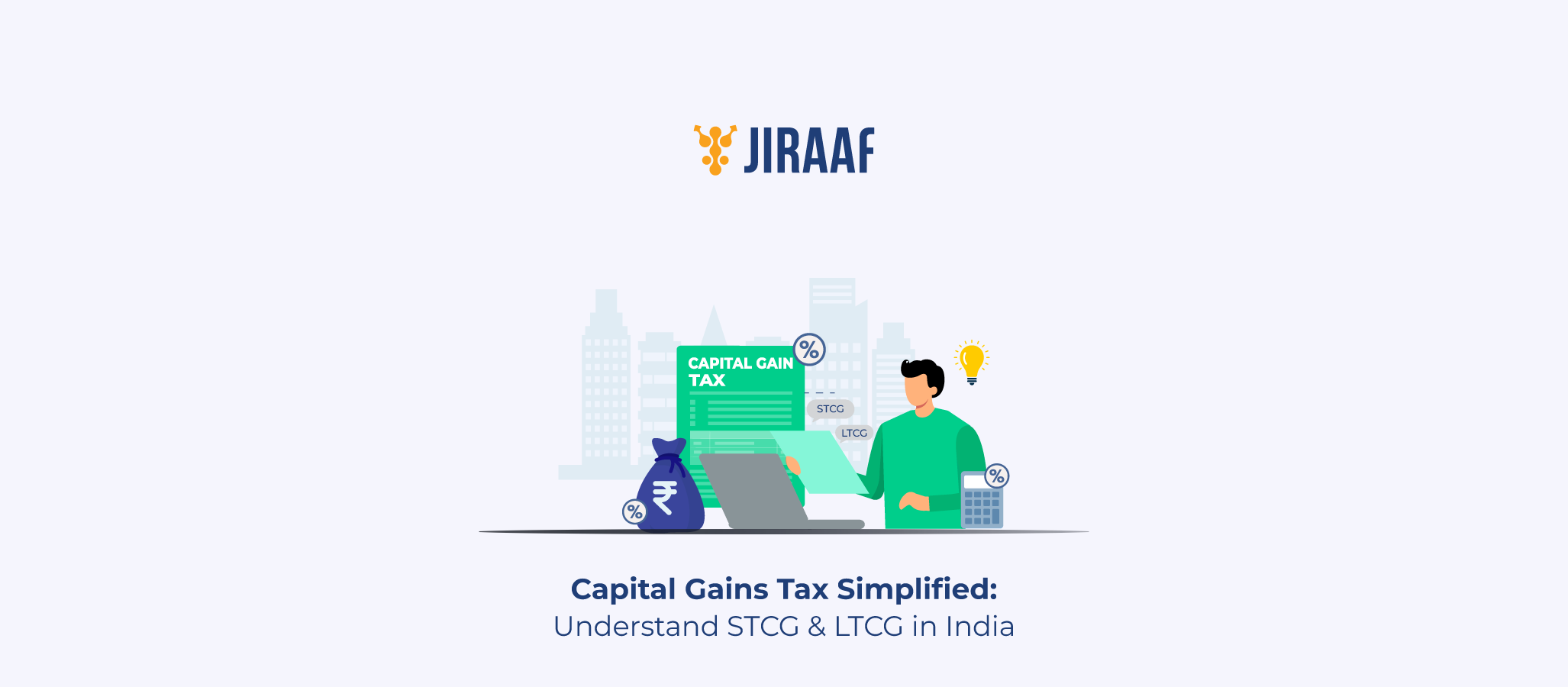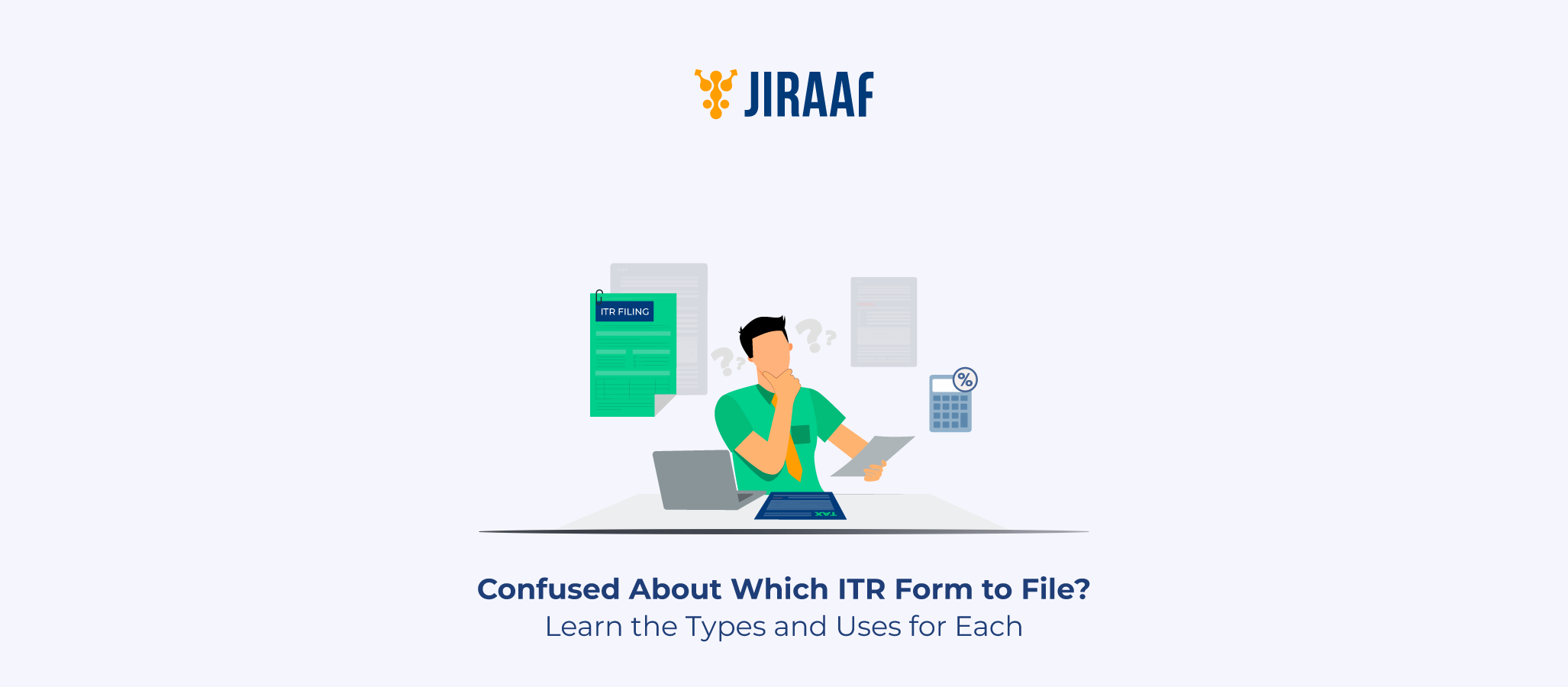Ever sold a house, a bunch of mutual fund units, or a stock that earned you a nice little profit? That profit—called capital gain—is taxable in India. But here’s the catch: not all capital gains are taxed equally. In fact, whether you held your asset for a few months or a few years could make a big difference in how much tax you pay.
That’s where capital gains tax comes in. And within it, there are two important categories—Short-Term Capital Gain (STCG) and Long-Term Capital Gain (LTCG). Each comes with its own definitions, tax rates, and exemption rules.
In this blog, you’ll understand everything you need to know about capital gains tax in India, how short-term and long-term gains differ, what rates apply, and how to save on your tax bill smartly.
What is Capital Gains Tax?
Capital gains tax is the tax you pay on the profit you earn from selling a capital asset. A capital asset can be anything from real estate, stocks, mutual funds, or jewelry, to even artworks.
You incur a capital gain when the sale price of the asset is higher than its purchase price (minus related expenses). The gain is classified into
- Short-term Capital Gain: For assets held for a shorter duration.
- Long-term Capital Gain: For assets held for a longer period.
The duration that separates the two depends on the type of asset—more on that in the next sections.
What is Short-Term Capital Gain?
Short-term capital gain arises when you sell a capital asset within a specified short holding period.
Here’s how it’s defined:
- Equity shares or mutual funds (where STT is paid): Held for less than 12 months
- Real estate and other assets: Held for less than 24 months
- Debt mutual funds, gold, etc.: Held for less than 36 months
Let’s look at how STCG works across asset classes.
STCG on Shares and Mutual Funds
If you sell listed equity shares or equity-oriented mutual funds within 12 months, your gains are considered short-term.
- Tax Rate: 15% under Section 111A of the Income Tax Act
- Condition: Securities Transaction Tax (STT) must have been paid on the sale
For example, if you buy a stock at ₹100 and sell it in 6 months for ₹150, your ₹50 profit is taxed at 15%.
STCG on Property and Other Assets
For real estate, gold, jewelry, and other physical assets, the holding period is 24–36 months, depending on the asset.
If you sell a residential property after 18 months of ownership, your profit is considered a short-term capital gain.
- Tax Rate: Added to your total income and taxed as per your income tax slab
- Applicable Sections: Section 70 and Section 74 for set-off and carry forward
STCG Tax Rates and Applicable Sections
- Equity & Equity Mutual Funds: 15% (Section 111A)
- Debt Mutual Funds, Property, Gold: Taxed at slab rate
- Surcharge & Cess: Applicable as per your total income
- Set-off: You can set off Short-term Capital Loss (STCL) against both STCG and LTCG
What is Long-Term Capital Gain?
LTCG is the profit from the sale of a capital asset held for a longer duration, typically more than 12, 24, or 36 months based on the type of asset.
Here’s the breakdown:
- Equity shares or mutual funds (with STT): Held for more than 12 months
- Immovable property (land/building): Held for more than 24 months
- Other capital assets: Held for more than 36 months
LTCG on Equity and Mutual Funds
If you hold your listed equity shares or equity-oriented mutual funds for over a year, and your total LTCG exceeds ₹1 lakh in a financial year:
- Tax Rate: 10% (without indexation benefit)
- Exemption: First ₹1 lakh of LTCG is tax-free under Section 112A
- Surcharge & Cess: Applicable based on your total income
So, if you earn ₹1.5 lakh in LTCG on equity in a year, you’ll pay 10% on ₹50,000.
LTCG on Real Estate
If you sold a house or land after holding it for over 24 months:
- Tax Rate: 20% with indexation benefit
- Indexation: Adjusts the purchase price for inflation using the Cost Inflation Index (CII)
- Applicable Section: Section 112
For example, if you bought a property for ₹30 lakh in 2010 and sold it for ₹70 lakh in 2025, indexation could reduce your tax liability considerably.
LTCG Tax Rates and Indexation Benefit
| Asset Type | Holding Period | LTCG Tax Rate | Indexation Benefit |
| Equity shares/Equity MFs | >12 months | 10% (over ₹1 lakh) | No |
| Real Estate | >24 months | 20% | Yes |
| Gold, Debt MFs | >36 months | 20% | Yes |
STCG vs LTCG: Key Differences
| Feature | STCG | LTCG |
| Holding Period | <12/24/36 months | >12/24/36 months |
| Tax Rate (Equity) | 15% | 10% (above ₹1 lakh) |
| Tax Rate (Others) | Slab rates | 20% with indexation |
| Exemptions | Fewer | Multiple (Sections 54, 54EC, etc.) |
| Indexation Benefit | No | Yes (except equity assets) |
| Applicable Sections | 111A, 70, 74 | 112, 54, 54EC, 54F |
Tax Exemptions & Deductions
You can reduce your LTCG tax bill legally using several exemptions and deductions.
Section 54, 54EC, and 10(38)
- Section 54: Exemption on LTCG from the sale of residential property if proceeds are reinvested into another residential property
- Section 54EC: Exemption by investing in NHAI/REC bonds (up to ₹50 lakh)
- Section 10(38) (Withdrawn in 2018): Earlier allowed exemption for LTCG on equity shares—now replaced by Section 112A
How to Save Tax on LTCG Using Reinvestment Options
You can reinvest LTCG proceeds to claim exemption under:
- Section 54F: When selling any asset other than a house, and reinvesting in a residential property
- Section 54GB: When investing in eligible startups
- Capital Gains Bonds (Section 54EC): 5-year lock-in with 5.25% interest (approx.)
Filing Capital Gains in ITR
To file your capital gains properly, you must:
- Use ITR-2 or ITR-3: Based on whether you have business income
- Mention full details: Sale value, purchase cost, date of acquisition, date of sale
- Apply indexation: Based on its applicability for LTCG
- Disclose foreign assets: If gains are from overseas investments
- Set off losses: Short-term losses can offset both STCG and LTCG, but long-term losses only offset LTCG
Don’t forget—the Capital Gains Account Scheme (CGAS) can help you park gains until reinvestment is made.
Conclusion
Now that you understand the ins and outs of capital gains tax, you’re in a better position to plan asset sales smartly. Short-term or long-term, every decision impacts your tax liability. By holding assets just a little longer or using smart reinvestment strategies, you can significantly cut your tax outgo.
Also, remember—tax laws evolve. So always check the latest guidelines or consult a tax advisor before filing.
FAQs
How much STCG is tax-free?
STCG on equity shares and mutual funds is not tax-free. It is taxed at 15%, regardless of the gain amount. For other assets, STCG is added to your total income and taxed as per your slab—no specific exemption limit.
Can I adjust losses in STCG/LTCG?
Yes. You can adjust short-term capital loss (STCL) against both STCG and LTCG. However, long-term capital loss (LTCL) can only be adjusted against LTCG. Both types of losses can be carried forward for up to 8 assessment years.
What is the LTCG exemption limit?
For listed equity shares and equity mutual funds, LTCG up to ₹1 lakh per financial year is exempt from tax. Beyond that, the gain is taxed at 10% without indexation. For other assets, there’s no exemption limit unless you use reinvestment exemptions like Section 54 or 54EC.
Discover fixed income investments with Jiraaf, a SEBI registered online bonds platform that educates and brings access to a wide array of bonds. Sign up today to explore diversified fixed income investment opportunities to support your goal-based wealth creation journey. Start investing!



